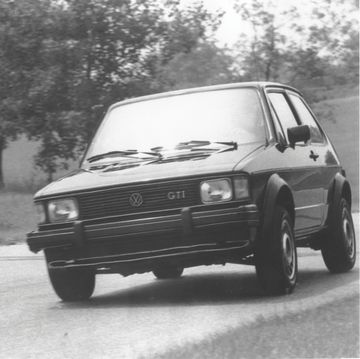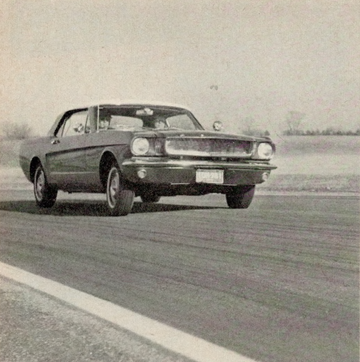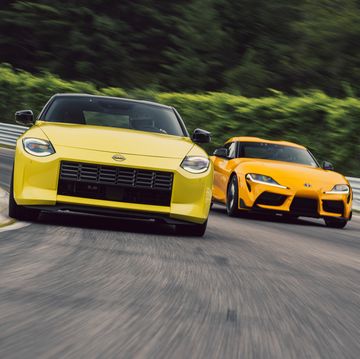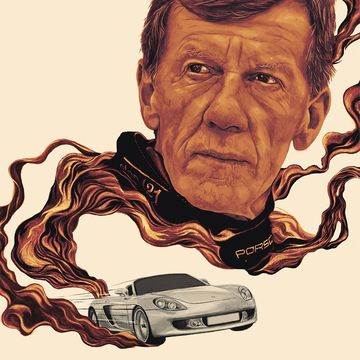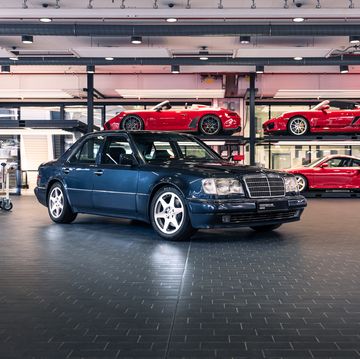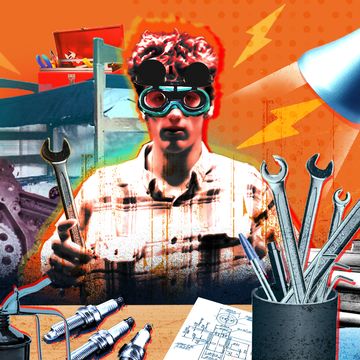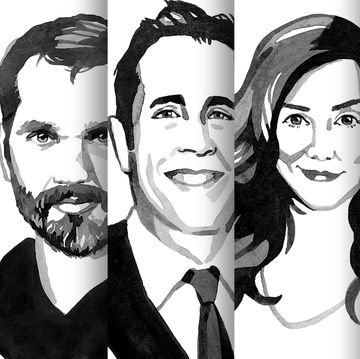Update: Stålenhag's work is being featured in a book, currently funded at nearly 6 times the goal. Both hardcover volumes will require a $75 or more pledge, but the PDF-only versions are $20 per volume. Check out the Kickstarter page if you're interested, or read simply read our interview with Stålenhag below.
Simon Stålenhag might live, work, and walk around modern Stockholm, but he dreams about a world that's both different, and very similar, to the one we all know. What caught my eye was, in the midst of the artist's repulsorlift hovercrafts and futuristic infrastructure, sit classic cars of the 1960s and 1970s.
I decided to reach out to Simon and learn more about his art, the world he built inside it, and what an artist working in a genre usually obsessed with space and the future can tell us about classic European cars.
R&T: Tell me about the world you're creating? What's it like? What are the people in your pieces doing?
SS: The world in my pictures is an alternative version of the kind of Swedish rural setting I grew up in during the late 1980's and early 1990's. I've added a few basic sci-fi concepts like the anti-grav technology and some sort of time warp phenomenon that causes different ages of the earth to collide. Hence the dinosaurs ... Most of the other stuff, like the big reactor towers and the strange architecture is just pumped up versions of contemporary technology. They idea is that in the world of my art, attitudes, and spending are much more in favor of science and technology. And the people in my pictures are just going about their everyday business in that world.
R&T: The past and future seem to coexist quite naturally in your work. Do you think this is how the future will be, with the new and old interacting?
SS: I actually don't speculate a lot about what the future will be like. My artwork takes places in some kind of alternate history, and I use fantastic elements to extrapolate and emphasize what was particular in that era, which I guess is also very subjective and personal. But yes, society does not shed its skin all at once—it seems to happen gradually, one innovation at a time. Like evolution. To paraphrase Carl Sagan (what he said about the evolutions of brains and cities): "The vestiges of the past are still retained among the constructions of the present." Or something like that.
R&T: What do you think the future means for cars? What is the role of gasoline in a world with repulsorlifts?
SS: I'm not sure. It all depends on what kind of energy source we will use to drive them. Oil is an energy source that really is hard-won. It is sunlight, captured in pre-historic plants hundreds of millions of years ago, fossilized and stored for hundreds of millions of years of plate tectonics and ice ages. It's quite hard to grow back, at least for us humans! And by burning it we're not only depleting a non-renewable source of energy, it also has a very negative impact on the environment.
So with the human population in the midst of an exponential growth rate, I would say, yeah, cars definitely need to become more efficient and with less or no negative impact on the environment. In the world of my art, the repulsorlift discs that are visible under the hovercrafts use the inherent lift in the earth's magnetic field (which is stronger near the poles, so the maximum weight of a ship increases as you move north). It's quite expensive and not very fast so it's best suited for transportation and logistics. The magnetic discs needs to be charged in a particular way—they are hollow and inside you have these magnetic layers spinning REALLY fast, creating some sort charge that allows the disc to get carried up by the earth's magnetic field. This spin is powered by gasoline or diesel so the ships themselves need to have big noisy engines and be refueled and so on. Just like a train or a bus or any other normal sort of engine, except the energy is used to spin the layers in the discs, instead of a set of wheels on an axis.
I know this is lame technobabble, but it's fun to imagine these things. There are a lot of interesting side effects of this technology that feeds new ideas like—refueling stations would need to be placed in the landscape at regular intervals (a fueling station is depicted in this image). Or, what would happen if the force inherent in the spinning discs got out of control in an accident? Wobbling discs would be flying all over the place, tearing down anything in it's path ... I haven't painted that yet!
R&T: In the present, are you a car guy? What do you own? What would you like to own?
SS: I love cars, but I don't own one. I don't even have a driver's license. You can get around pretty good in Stockholm using the public transportation or by just walking! My father is a car nut for real. He works as a reporter for a motor-camping magazine here in Stockholm and has been very enthusiastic about cars all my life and I guess some of that passed on to me (at least concerning the aestethics of cars). If I ever own a car, I wish it could be something like a 1972 Volvo 144.
A society's flora of vehicles is a wonderfully instructive thing—I love how easily you can tell at what time a photograph was taken by just looking at the vehicles in it. It's second only to clothing and fashion. I guess it actually is fashion.
R&T: Tell me about the dinosaurs. What are they doing in the future?
SS: Well. I don't want to make the pictures duller by providing a dull answer to it. That should be for the viewers to speculate about ... but let me just say, there's a lot of high energy physics experiments going on in that world, and who really knows what effects those experiments are having on the surrounding environment? On the integrity of space and time itself? (Who knows? Probably everyone with an elementary understanding of physics ... but lets ignore that!).
R&T: A lot of the cars you feature are icons of the 1970s from German and Swedish automakers. What is it about cars of that era that captivates you?
SS: It's the cars I grew up around and in. My family first owned a red 1976 Mercedes 300D 5-cylinder, then a 1978 Volvo 265E, and after that we got another Mercedes, a mid or late 1970s W124. And there's something about the design of that time really speaks to me. Cars from that era have a certain charm and craftsmanship to them that I don't really feel with modern cars. From a purely artistic perspective I truly adore Saab and the design work of Sixten Sason. His drawings of the early Saabs are mind blowing and his legacy on the aesthetics of Swedish traffic during the second half of the 20th century cannot be exaggerated.
Check out more of Simon's work at his website.






